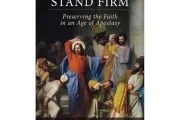Victor Joseph Reed was sent at the age of seven in 1912 to St. Joseph’s College in Muskogee, Oklahoma. Victor Reed expressed interest in the priesthood and he was sent to St. John’s Seminary in Little Rock, Arkansas. In 1928 Bishop Francis Clement Kelley sent Reed to continue his studies at the Urban College of the Propaganda in Rome. After he was ordained a priest, he to Oklahoma and was assistant pastor at St. Joseph’s Cathedral in Oklahoma City.
After having a second opportunity to study in Rome, Fr. Reed was appointed to be the bishop of Oklahoma City-Tulsa in 1958. The next year, Pope Blessed John XXIII convoked the Second Vatican Council (1962-1965), which Bishop Victor Reed attended every session and was involved in the discussions on the liturgy.
When the Council concluded, Bishop Reed tried to implement the renewal of the Council in his diocese. There were some clergy and laity who were supportive and others who opposed them. Bishop Reed had to work with both extremes; he and the Church were in new waters. Some thought he allowed too much experimentation while others claimed he did not allow enough. Still Bishop Reed was determined to implement Vatican II. .


